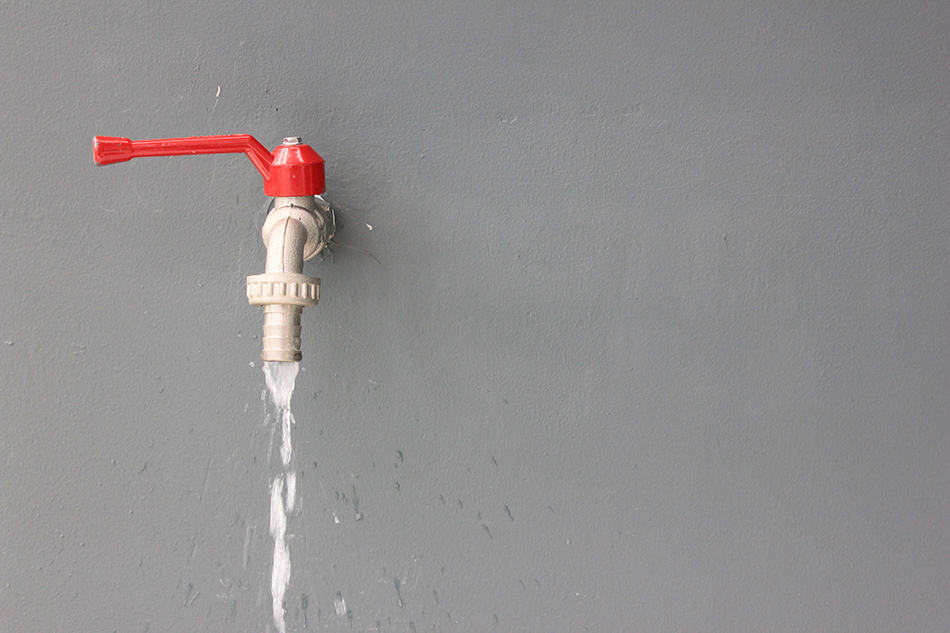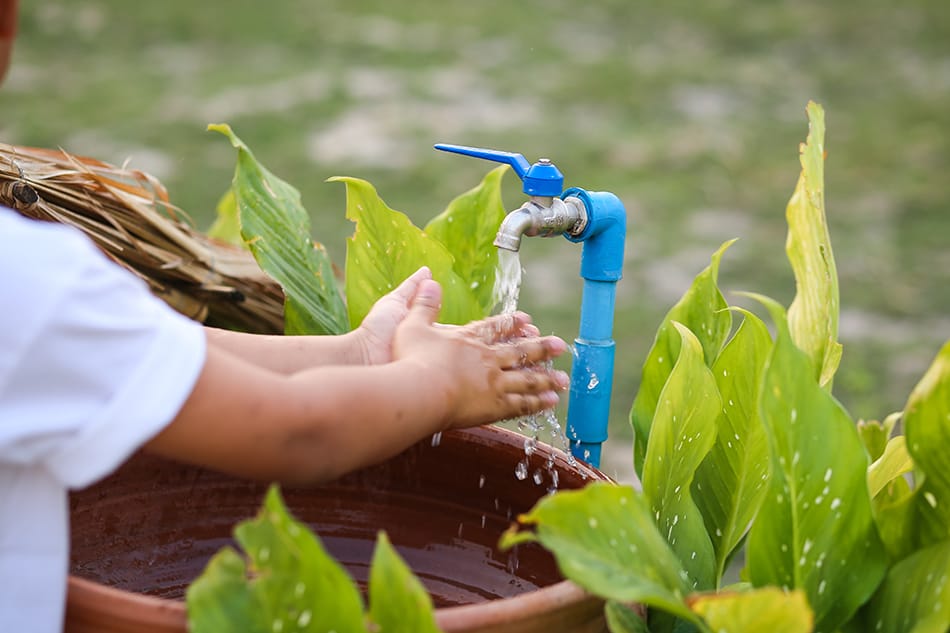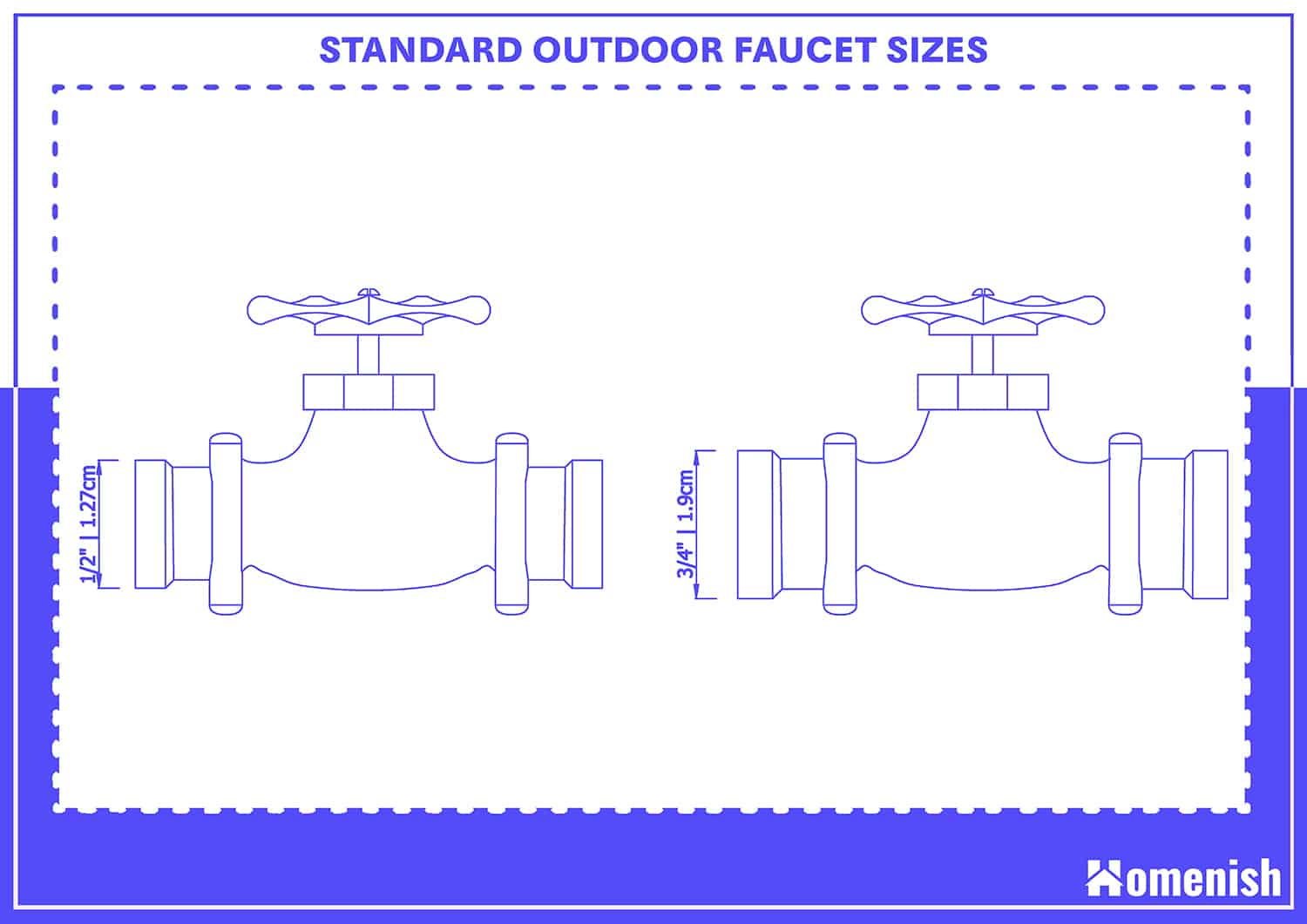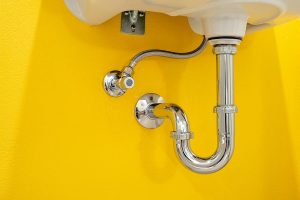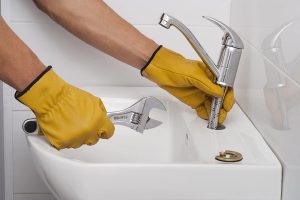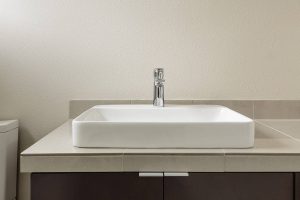Maybe you’re shopping for a garden hose and would like to know the standard size of an outdoor faucet. Or you’re building a house and would want one for your new home.
Whatever the case may be, you’ve been researching the standard size of an outdoor faucet. Well, we got you covered as this article will help you learn about the size of outdoor faucets, or commonly known as hose bibs.
A Closer Look at Outdoor Faucets
Outdoor faucets or hose bibs are more important than they seem. We can wash our cars because of it. We can water our plants in the garden because of a hose connected to an outdoor faucet. And our kids can have fun running through the sprinkler in the summer because of it.
In short, an outdoor faucet allows us to be productive outdoors. It can go by different names. Some people call it sillcock. Others refer to it like a spigot. And others simply call it hose bibs. But regardless of the name, it still refers to the water mechanism that’s attached to the outside of a house.
An outdoor faucet is connected directly to the plumbing system of a home, like all other faucets in the home attached to the plumbing system through a series of smaller pipes. However, since it is outdoors, a hose bib requires more maintenance than indoor faucets, especially during the cold months.
An outdoor faucet is usually mounted on the side of the house. There are several parts of an outdoor faucet. The handle is perhaps the one you’re most familiar with, as this is used in turning the water on or off. The threads are found at the tip of the spout for connecting the hose and the outdoor faucet. Meanwhile, the bonnet nut secures the stem of the faucet to the base.
When the outdoor faucet is turned off, a rubber called a washer helps in sealing the water. The valve seat, meanwhile, serves as the gate that prevents the water from moving whenever the faucet is off. And there’s also a rubber inside the bonnet called a bonnet packing to seal the water at the top of the faucet.
Standard Size of an Outdoor Faucet
Now let’s tackle the question: what is the standard size of an outdoor faucet?
An outdoor faucet can either be ½ inch or ¾ inch. The two sizes are also the common widths of water pipes. These sizes refer to the pipe diameter. A 1/2 inch faucet water pipe will have more water pressure than a 3/4 inch one. Keep this in mind when choosing the size you want.
But what if you bought a hose that is of the wrong size? Let’s say that the hose is ¾ inch wide, but you realized that the outdoor faucet in your garden is ½ inch wide? What can you do to remedy it?
You obviously can’t change the hose bib as it is already installed. But you can buy an adapter that would screw right into the faucet. This would let you access water without having to buy and install a new hose bib. It won’t also change the water pressure that much.
Garden hose size often ranges between 3/8 to 3/4 inch in diameter, but this will differ in different locations. The main point is to get your outlet’s diameter measurements right, and the rest is sorted.
How to Replace an Outdoor Faucet
Now let’s say that the outdoor faucet in your garden is already corroded. Or there may already be leaks that necessitate replacing it. How do you replace an outdoor faucet, then?
First, turn off the water supply by switching off the valve. This usually connects the spigot to the main water line. If there is no valve that’s connected near to the spigot, then you can direct your attention to the water meter. This is often placed in an enclosed space in the basement or crawlspace.
Second, open the spigot so that you can drain the remaining water. Although the water supply may already be closed, rest assured that there’s still water in the pipes. Opening the spigot can enable you to drain the remaining water. This would also release water pressure left in the pipes and let you safely work on the outdoor water replacement.
Using pipe wrenches, remove the old spigot. Use one wrench in holding down the water pipe, then attach the other wrench to the base of the spigot using your dominant hand. Loosen the spigot with your right hand. Remove the spigot by hand once it is loose enough.
If your house is old, it likely has an outdated plumbing system with rusted or corroded faucets. You don’t want to use too much force as you may break the faucet. You may try using a spray lubricant such as WD-40 to dissolve the corrosion and make it easier for you to loosen the threads.
Clean the end of the pipe and the threads. Brush off the debris in between the threads. You might see white powdery substance trapped in the pipes. These are mineral deposits that have been grown from the hard water flowing throughout the house.
Get a Teflon tape, which is readily available in most home improvement stores. Also known as plumber’s tape, it is commonly used in plumbing for sealing pipe threads. Wrap three layers of it on the threads of the spigot. This would hold the faucet and pipe together, preventing water from seeping through the threads.
Now connect the new outdoor faucet to the pipe, using your hand in placing and rotating it. Place one wrench on the pipe and another on the base of the faucet before gently tightening it. Ensure that you twist the faucet properly so that there won’t be any room for leaks.
Test your work by opening the water supply and checking if there are any leaks. If there is still water dripping from the spigot, turn off the water supply and reinstall the faucet.
Maintenance of a Faucet and Safety Precautions
During summer, your outdoor faucet offers invaluable benefits and then some more. When the winter season clocks, these faucets get immensely damaged by the cold and can cause more damage to the indoor pipes that will burst. The remedy? Instant frost-free faucets. They are much pricier but are a must-have, especially if you’re living in areas where the winter season is predominant. You should also ensure to turn off the valve that supplies water to this faucet during the cold season.
To be even safer in the winter season, ensure to drain out any remains of water in the pipe by opening the faucet even after the valve is closed. This little water can also damage the pipes if it isn’t completely drained out.
Choosing Your Hose
A hose and faucet go hand in hand; therefore it’s important to understand the practicality, size, and durability of both items, which we’ll disclose here. Hoses come in different colors and materials. Vinyl material pipes are lightweight but not durable, and the ones made of rubber are much heavier to carry around and much pricier but offer more benefits and durability to a homeowner.
Size of a hose
The wider the hose, the more water supply you’ll get. The diameter of a hose is typically ¾ inches, ½ inches, and 5/8 inches. It’s rare to find a hose that doesn’t fit this measurement, but all this will chop up to the size of your faucet. The frustration of returning home with a hose a size too big or too small is infuriating, so ensure you take measurements beforehand.
The length of your hose can be anywhere from 25 to 100 feet, even shorter, keeping in mind that the longer the hose, the less pressure you’ll have. Therefore, choose a hose that perfectly reaches your garden and not any longer.
Fitting
This is the process of connecting your hose to the faucet to allow you to water your garden or vegetables at ease. Your choice of material is ultimately brass, which is metal or plastic, with the former being more durable and expensive. However, while brass is clearly the best option, it can’t easily be tightened onto the faucet with just your hands; you’ll need a wrench. Henceforth if your outdoor activities are minimal, the plastic will suffice to ease the task of removing and attaching the pipe when needed.
You can add a nozzle to your pipe, which will allow you to spray to a wide and further radius by standing at one spot. With a spray model, you can just turn the dial and change the spray pattern to your liking. Other kinds are the pistol and twist nozzle that also offer great benefits once attached to the pipe.
Connecting a Faucet and Hose Using an Adapter
If, for some reason, the hose you bought has threads that don’t fit the faucet, then you’ll need an adapter to connect the two. How this works is by buying an adapter that fits both the size of the water pipe and faucet. For instance, if your faucet’s outlet diameter is ¾ inches and the pipe is 5/8 inches, then your adapter should have these measurements on either side and attached accordingly. Brass and metal adapters are far more recommended than plastic, as they are durable. While adapters are great problem solvers, it’s still important for you to buy a faucet that fits your hose or the other way around.
Conclusion
An outdoor faucet can help us stay productive outside the house. With it, we can water the plants, wash the car, and perform other similar tasks. An outdoor faucet may either be a ½ inch or ¾ inch wide in terms of diameter.
Replacing an outdoor faucet is a relatively easy task that you can perform as long as you have the necessary tools like Teflon tape and a new outdoor faucet.
